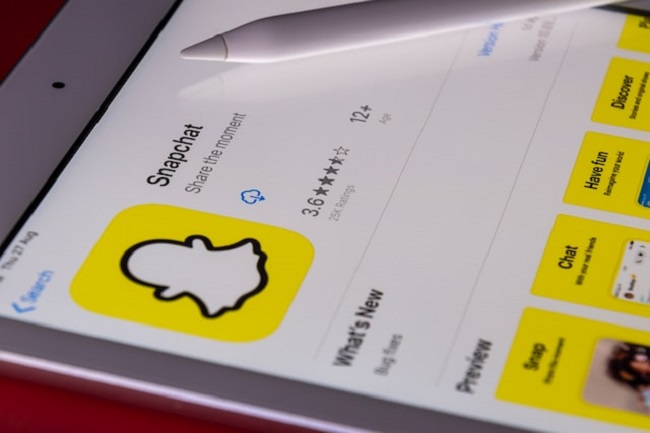Marketing techniques have evolved as the way consumers access information has changed. Radio advertising led to television advertising, which later evolved into digital marketing with the rise of the internet. In addition to natural marketing growth, the COVID-19 pandemic expanded the power of online digital marketing.
While television is still the media of choice for many businesses, digital marketing allows businesses to reach a global audience online. As digital marketing strategies continue to grow rapidly, the number of jobs in the field is naturally increasing.
Advertising spending in the digital media market is expected to reach US$ 701.20 billion in 2023. The largest segment of the market is search advertising with a market share of US $ 296.70 billion in 2023. In a global comparison, most advertising spending will be generated in the United States ($ 297.40 billion US in 2023).
What Is Search Engine Marketing?
Search engine marketing is the practice of marketing a business using paid advertising that appears on search engine results pages (or SERPs). Advertisers provide keywords that users on search engines such as Google and Bing can enter when searching for certain products or services, giving the advertiser the ability to have their ads appear near the results of a search query.
These ads are often called pay-per-click ads and come in different forms. Some are small text ads, while others, such as Product Listing Ads (PLAs, also known as Placement Ads), are more visible, product-based ads that target people and – the opportunity to see an overview of important information, such as the price.
The greatest strength of search engine marketing is that it gives advertisers the ability to show their ads to motivated customers who are ready to buy at the time they are ready to buy. No other social media can do this, which is why search engine marketing is an effective and incredibly powerful way to grow your business.
How Does Search Engine Marketing Work?
Simply put, every Google ad you see goes to the ad market before it appears in the SERPs. To participate in the ad auction, you must first identify the keywords you want to bid on and specify how much you will spend per click on each of these keywords.
Once Google determines that the keywords you are providing them with are included in the user’s search query, you enter the advertising market. Not all ads will appear in all searches related to that topic. Some keywords don’t have enough commercial intent to warrant including ads on pages.
For example, when I type “What is marketing?” on Google, I don’t see any ads coming up. Also, even if your keyword is good for advertising, it does not mean that you will “win” the market. Advertising keeps two main points in mind when determining which ads to put in the SERP: your maximum cost and the quality of your ad.
As the name implies, the Quality Score indicates the quality of your ads, keywords, and landing pages. You can find your rank, listed on a scale of 1 to 10, in the “Status” column of your keyword in your Google Ads account. The more relevant your ad is to the user, the more likely the user will click on it and have a pleasant experience on the landing page, all factor into your overall ranking.
Who Should Use Search Engine Marketing?
Many marketers think that PPC is useless. But they are without a doubt mistaken.
As a general rule, PPC will only give your website sustainable traffic as long as you continue to pay for it. It’s also worth mentioning that in most cases, users tend to click on well-placed organic listings rather than ads. Also, there are many new search queries every day. It seems to be more expensive to invest in PPC marketing for all the important keywords you want your website to rank for.
So why PPC? Because you will miss something if you don’t.
PPC also has many advantages. Paid search results dominate the content at the top of the folder, and with four ads on desktop and three on mobile, users will always see paid ads before organic search results.
One of the advantages of search engine marketing and PPC is that it can provide almost immediate results and quick investment and investment for companies that want to increase their traffic quickly and spend money on the short window.
In addition to better visibility, PPC advertising gives you more control over how you present your information and products. While search engines often determine how organic search results are displayed, you have more control over calls to action, pricing, bullets, and other aspects of your PPC ad.
Google also offers you the option of Product Listing Ads (PLA), a visual marketing ad that allows users to see an image of what they will click on. This improves the click-through rate significantly.
Different Services Under Search Engine Marketing
A brief description of the different types of Search Marketing is given below:
1. Pay Per Click (PPC)
In Pay Per Click online advertising, every time a user clicks on their online ad, the advertiser is charged for that click. It is also known as Sponsored Ads or Sponsored Search.
One of the most common types of PPC advertising is paid search advertising which appears in business search results. Business search acts as a trigger for pay-per-click advertising. Display ads, especially banner ads and referrals are also part of PPC advertising. You might think that by paying more, advertisers can see their ads displayed more often than their competitors. This is a huge misconception.
Fortunately, the ads are displayed according to the concept of advertising marketing. Most search engines implement this automation system to ensure that the ads displayed on the search results page are useful and relevant. Social media is an automated marketing system based on complex algorithms. To be considered for this marketing, advertisers identify and support search terms that should make their ads appear in the search results section. It will also indicate the amount of traffic it is willing to pay for clicking on the ad.
A higher ad spend will help you get more searchable keywords, but it may not guarantee that your ad will be seen.
2. Local SEO
Within the category of Search Engine Optimization, local search optimization has a lower part. Local SEO is an SEO strategy that aims to make your business appear in Google Maps results.
Local SEO aims to highlight businesses in specific geographic areas. Here, clicks are not paid. In other words, promoting your business’s online presence for local audience inquiries involves making sure that people can find your business both online and offline. Local SEO includes claiming business listings, ensuring it appears in Google Maps results, managing online surveys and listings, engaging in social media, adding location pages, etc.
Local search results appear in the center of the search engine results page and are displayed on a map. To get local search results, the query must include a type of business found in the area such as “dental clinic” or “grocery store”. It takes about 1-8 months to find your business shown in local search results.
3. Organic SEO
Organic SEO is different from other types of search engine marketing. Organic SEO aims to show your business in organic search, non-local and unpaid results using short-term strategies such as keyword research, link building, etc.
There are no local targets related to the search query. This demand is general and not limited to local conditions. Again, clicking on your site is free. Organic search results rank among paid search results. Sometimes, if local search results are displayed, organic search results appear below. They appear as traditional blue links or non-traditional infographics or featured snippets.
Importance Of Search Engine Marketing for Your Business
SEM tagging strategies are important for the following reasons:
Digital marketing: Online shopping is one of the most popular ways for customers to shop. SEM advertising attempts to extend the reach of digital marketing by identifying and using keywords that will attract people who may be interested in a client’s product or service. SEM campaigns target the most valuable keywords.
High conversion rates: One of the biggest benefits of SEM marketing efforts is that they place an organization’s products in front of customers when they are ready to buy. For example, when buying ads for a product keyword, “food processor”, for example, customers who want to buy food processors online will first see the company’s product ad. With SEM, there is a higher chance that visitors who click on the ad will want to make a purchase, thus increasing the conversion rate of the customer and raising the sales target.
Speed: SEM techniques often increase traffic faster than SEO, which can require a long time to analyze keywords and content structure for SEO analysis. SEM puts products and services directly in front of customers by placing them at the top of the SERPs.
PPC model: The PPC model, similar to any type of paid investment, is a cost-effective strategy that allows organizations to pay only when their ads are clicked. Members can also control exactly how much they spend by setting a maximum cost per click (CPC) and daily budget.
Increased organic rankings and trust signals: Increasing traffic to the page through paid advertising ultimately increases traffic to the page and increases the credibility of the Google ranking. If a product performs well through SEM advertising, it can be positioned at the top of the SERP organically, making SEM more important.
Segmentation: In addition to keywords, SEM campaigns can use geographic location, language, and online behavior to target, ensuring that they reach only users who may be interested in their product or service.
Deep insight: Tools like Google Analytics provide organizations with detailed reports on the status and progress of their SEM campaigns in real time. This provides valuable insight into the effectiveness of SEM advertising, which helps organizations analyze how they can improve their advertising.
Search Engine Marketing Tools
It is important to choose the right SEM tool. However, finding the right one can be like looking for a needle in a haystack. Thanks to you, we have scoured the net and selected the best SEM tools.
SEMRush
As one of the leading SEM tools, SEMRush helps digital marketers create a strong foundation for their SEM accounts. Keyword research, keyword ranking tracking, competitor backlink analysis, site analysis, traffic analysis, and page metrics are just a few things you can do with this platform.
Google Keyword Planner
You can’t have a strong SEM tool list without calling Google Keyword Planner. Since Google is likely to be where you want your ads to appear, it makes sense to consider using the Google Keyword Planner to analyze keywords that are important to your business and track how searches for certain keywords change over time and – go. This will help you narrow down the list of possible keywords to ensure you choose the most effective ones for your business.
DataFeedWatch
DataFeedWatch is the leading content marketing and PPC automation solution available in 60 countries and across 2000+ e-commerce channels to help businesses, retailers and online marketers grow, both locally and all over the world.
Using a feed management system like DataFeedWatch will allow you to create the best product feed based on your available data. A customized list will help you increase your sales, sell faster across multiple channels, and prevent off-product advertising.
Optmyzr
For companies or marketers with large budgets, who want to run multiple PPC campaigns, or anyone who needs more automation features, Optmyzr offers more advanced tools to create and manage campaigns in many.
Like WordStream, the tool allows you to launch, track, and manage PPC campaigns across multiple platforms. According to Optmyzr, all its models allow users to customize scripts, alerts, and reports. Each member attends semi-annual product training sessions with Optmyzr representatives.
Search Engine Marketing Examples from Aumcore Case Study
Meridian Leasing
We offered digital marketing solutions to help them connect with their target audience in the shortest possible time. We improved the design, implemented new features that will make navigation a breeze, redesigned the product catalog section, and created more content to attract visitors to the site, and inform and make them want more.
We are also provided digital marketing services – that included SEM – to improve their search engine presence and get relevant business inquiries. The result? 128.75% increase in site traffic.
Pivotal180
The goal of Pivotal180’s paid campaign was to drive lead generation. During the campaign, Pivotal180’s conversion and lead rate improved by 40%. The cost per acquisition decreased by 42% in the first five months of the campaign.
Once the campaign was optimized, the average cost per click (CPC) dropped by 19% in just five months. Finally, overall website traffic improved by 19% and the website increased its organic traffic by 17% in just four months.
Conclusion
Whether it’s increasing visibility, lead quality, or efficiency, search engine marketing is one of the fastest ways to promote your product/service online. SEM is the present and the future and jumping on board is not optional.





Tell us your thoughts in the comments